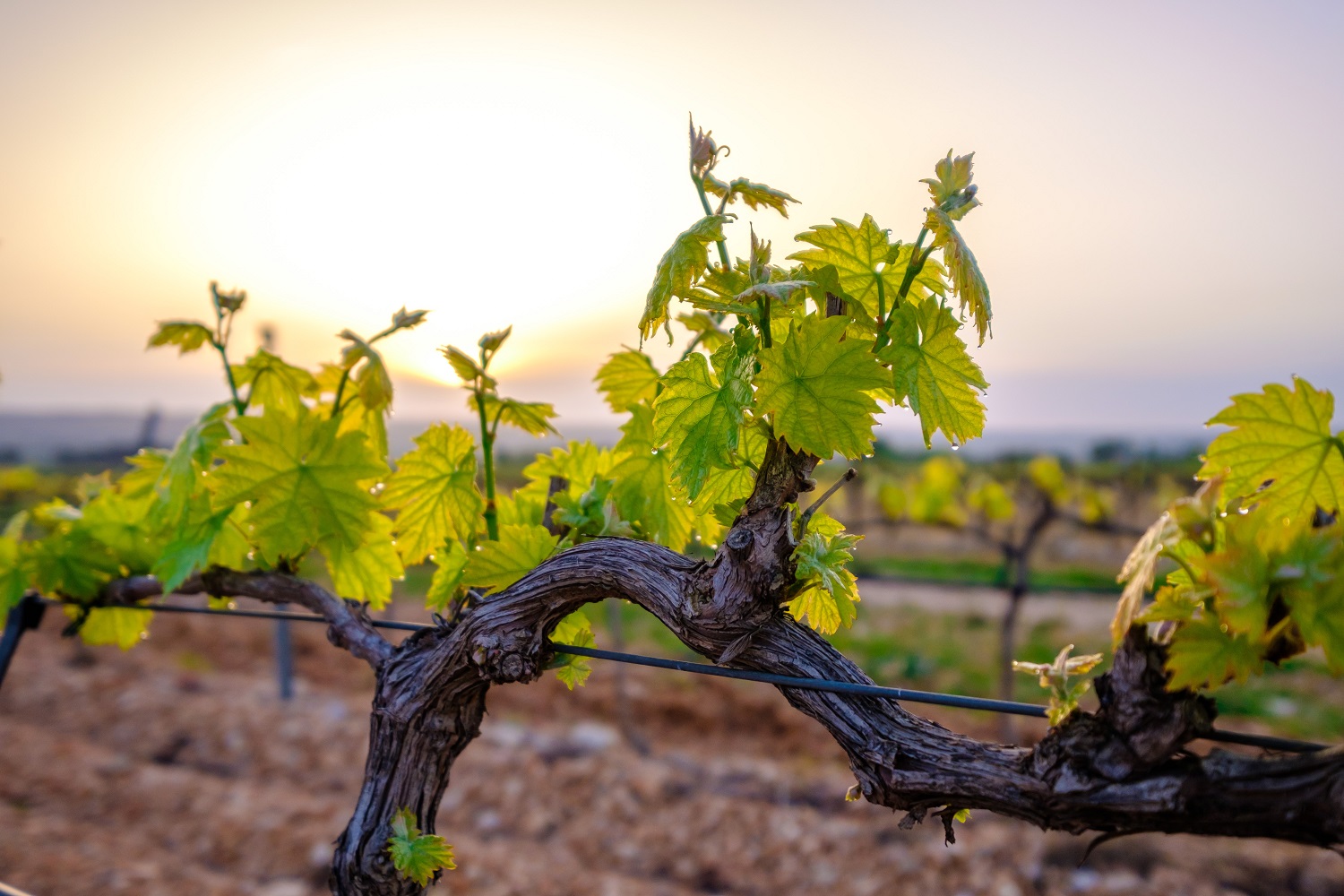NEW
Predictive models and biostimulants to reduce the use of phytosanitary products in vineyard
24 February 2025
- At NEIKER we integrate the agritech concept in all phases of production to improve pest and disease management in crops
- Optimization in dosage and the use of biostimulants have allowed us to reduce the use of phytosanitary products in vineyards by up to 50%
NEIKER’s Plant Production and Protection Department has been working for more than 20 years in the field of viticulture looking for solutions to the main challenges faced by the sector.
One of them is the optimization of phytosanitary treatments in vineyards, with the aim of reducing their use without compromising crop protection. Through research and the development of technological tools, we seek to adjust the application of these products to the real needs of each plantation, avoiding unnecessary applications and minimizing their impact on the environment and the environment in general.
One of the main challenges is to avoid the indiscriminate application of phytosanitary products, used to control agricultural diseases without evaluating the real conditions for the appearance of pathogens, generating an unnecessary use of chemical products. Ana Díez, researcher at NEIKER’s Plant Production and Protection Department, explains that “often, phytosanitary treatments are applied following fixed schedules, without taking into account the phenological moment of the crop, the appropriate dosage or climatic conditions”.
In this context, agritech plays an essential role by integrating innovation in all phases of production to optimize the use of phytosanitary products. Specifically, at NEIKER we employ advanced technologies such as meteorological sensors, data platforms and predictive models based on artificial intelligence and big data analysis, which allow us to analyze in real time the environmental conditions and of each crop to accurately determine when and where it is necessary to apply treatments.
“Thanks to these advances, we can detect the risk of diseases before they manifest themselves, allowing us to apply treatments more precisely and targeted only in the areas that really need it. In this way, we reduce the load of phytosanitary products in the environment and avoid unnecessary applications,” says the researcher.
50% reduction and other sustainable alternatives
In addition to improving precision in risk detection, we also work on optimizing the dosage of phytosanitary products. By adjusting the amount applied according to the state of the crop and climatic conditions, we have managed to reduce the use of these products by up to 50% in the trials carried out in vineyards.
Another of the strategies developed by NEIKER is the search for more sustainable alternatives to conventional phytosanitary products. In this sense, we have explored the use of biostimulants and elicitors, substances that reinforce the natural defenses of plants and make them more resistant to diseases. “Combined with traditional treatments, these products have shown positive results, making it possible to reduce the amount of chemical pesticides needed to control pests and diseases,” says the researcher.
We are also investigating ecological strategies to completely eliminate the use of chemical-based pesticides. However, their implementation remains a challenge in some crops, as their efficacy varies according to the type of disease and environmental and soil conditions.
To ensure their feasibility and assess their impact in real environments, we have worked in collaboration with wineries in the region, where these practices have been applied with the commitment of the agricultural sector. Among the wineries participating in this initiative are Agrícola Labastida, Bodegas Ostatu, Bodegas y Viñedos Artuke, Eguren Vines, Bodegas Gil Berzal, Beldio Txakolina, Bodegas Casa Primicia, Bodegas Loli Casado and Bodega Gorka Izagirre, promoting a collaborative approach that favors the transition towards a more sustainable production model.
Other crops
In addition to its application in vineyards, we have extended our strategies to other woody and herbaceous crops, such as potatoes, sugar beets and apple trees. In these cases, we are working on early detection and precise adjustment in the application of phytosanitary products to reduce the use of chemical products without compromising productivity.
In this line, we are currently validating, together with Euskalmet and the Unión Agroganadera de Álava (UAGA), specific predictive models for diseases such as downy mildew in potato, cercospora in beet and carpocapsa in apple. These tools allow adjusting control strategies to the particular conditions of each plot, avoiding unnecessary treatments and ensuring a more efficient management of phytosanitary products.
These initiatives are aligned with European regulations on the sustainable use of phytosanitary products, such as Directive 2009/128/EC and the “From Farm to Fork” plan, which seek to reduce the risks to human health and the environment derived from the use of pesticides. These regulations promote integrated pest management, prioritizing alternative techniques such as non-chemical methods, which contributes to a more sustainable and efficient agriculture in the long term.



